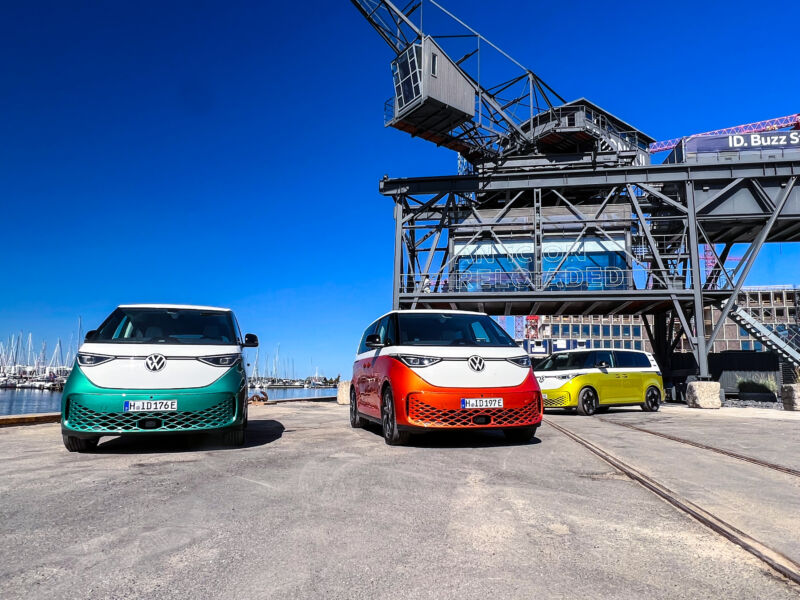What we learned driving VW’s new electric ID Buzz

Enlarge / Volkswagen won't reveal the US-spec ID Buzz for another year, but it invited us to drive the European version, which it has just launched. (credit: Jonathan Gitlin)
Volkswagen provided flights from Washington, DC, to Copenhagen and back, plus two nights in a hotel so we could drive the ID Buzz. Ars does not accept paid editorial content.COPENHAGEN, DENMARK-Few vehicles in the time we've been covering the industry have attracted-or sustained-quite the level of interest as Volkswagen's ID Buzz. Part realization of two decades' worth of concept cars and teases, part apology for dieselgate, it's an electric minivan with retro-cool styling, built on a solid electric vehicle platform. US-spec ID Buzzes are still some way off-we won't get the Buzz until 2024-but in the meantime, VW asked if we'd be interested in trying out the two-row, European-spec model, which is just about to go on sale the other side of the Atlantic.
Boxy microbuses have been a part of the VW lineup since 1949's original Type 2, also known as a T1, Kombi, or Transporter. As time went on, the buses evolved to be more angular, and they eventually started to look like any other minivan. But as VW found with the Beetle concept in 1994, there's a lot of affection out there for its early designs.
The first retro-looking revival attempt was a 2001 concept called the Microbus. This was before people realized you could daisy-chain immense amounts of laptop batteries together to make a viable electric vehicle, so the 2001 Microbus concept would have been powered by VW's internal combustion engines-most commonly its ubiquitous and cheaty diesels, no doubt.